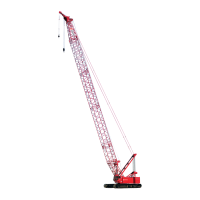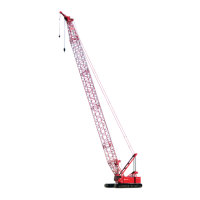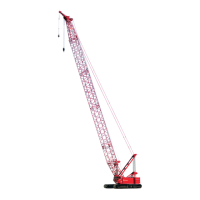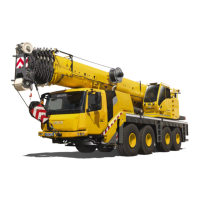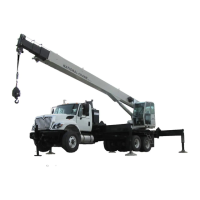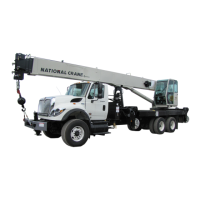ELECTRIC SYSTEM 16000 SERVICE/MAINTENANCE MANUAL
3-46
Published 05-03-17, Control # 228-03
Boom Node Status
See Figure 3-30, Item 9 for the following procedure.
The boom node status displays the boom top node and jib
node communication. A zero is displayed if there is a
communication error. The boom data box indicates what
boom nodes may be available on the bus:
0—No communication
1—Boom top node
2—Luffing jib node
4—Fixed jib node
128—A node is present that is not currently identified.
Wireless Receiver Status
See Figure 3-30, Item 10 for the following procedure.
The wireless receiver status displays the boom top and
wireless receiver communication. The following numbers
indicate the type of communication:
0—Communication error
1—The boom top transmitter is working.
2—The rotating bed receiver is working.
8—The MAX-ER Remote control is working.
Crane Status
See Figure 3-30, Item 11 for the following procedure.
Two crane status banks display crane errors, and both banks
should normally display a zero. The number displayed in the
crane status top bank corresponds to the following
numbered communication errors:
0—Crane status is normal.
1—Node 2 is not communicating.
2—Node 3 is not communicating.
4—Node 4 is not communicating.
8—Node 5 is not communicating.
16—Node 6 is not communicating.
32—The bin node is not communicating.
64—Node 7 is not communicating.
128—The engine node is not communicating.
The number displayed in the crane status bottom bank
corresponds to the following numbered errors:
0—The boom raising system (BRS) status is normal.
1—The BRS node (Node 9) is not communicating.
Crane History
See Figure 3-30, Item 12 for the following procedure.
The top crane history bank displays the errors since power
was last cycled.
The bottom crane history bank is not used at this time.
